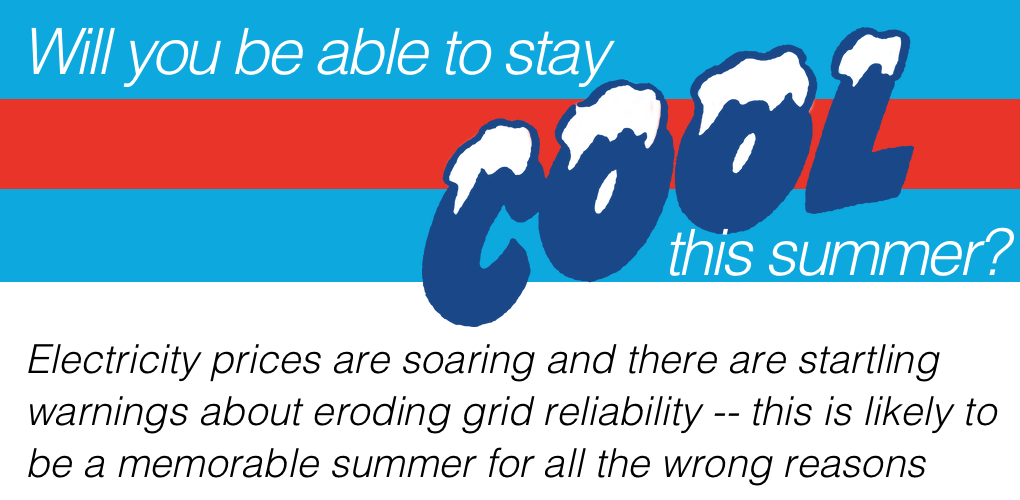
Facing Grid Unreliability Reality
Summer heat has arrived and for too many families there’s deep concern over whether they can afford to stay cool or whether the grid is going to hold up when they need it most. With natural gas prices nearly three times what they were last year, electricity prices soaring and startling warnings about eroding grid reliability, this is likely to be a memorable summer for all the wrong reasons.
The West Coast, Texas and the Midwest are all at risk of blackouts – a clear sign of a situation going from bad to worse – and while regulators are sounding the alarm, there’s no consensus over how to address the problem. There are those who seem to be grappling with reality, and then those determined to press forward – even accelerate – a renewable-only agenda even as the wheels appear to be coming off the grid.
Put John Moura, director of reliability assessment and performance analysis at the Norther American Electricity Reliability Corporation (NERC), in the “grappling with reality” camp. After NERC released its 2022 Summer Reliability Assessment, so dire it’s been labeled “unprecedented” by more than one journalist, he said, “It’s a pretty sobering report, and it’s clear the risks are spreading.” He added, “And while we’ve initiated action on a number of fronts and sounded the alarm bells for many years, there’s clear, objective, conclusive data indicating that the pace of our great transformation is a bit out of sync with the underlying realities and the physics of the system.”
NERC’s CEO Jim Robb offered the same kind of frustrated warning last year, saying, “…in our hurry to develop a cleaner resource base, reliability and energy adequacy has to be taken into consideration.” He continued, “I know that operators and planners are working very, very hard to preserve reliability, but they’re continually asked to do so and manage your grid under more and more challenging conditions.”
Federal Energy Regulatory Commissioner James Danly has also been outspoken about the need for a policy pivot that places greater emphasis on maintaining reliability and recognizing the inherent risks of a rush away from traditional, dispatchable sources of power towards intermittent alternatives.
Danly recently pushed back on the idea that transmission reform is all that’s needed to right the reliability ship. “I think there is in the minds of some, [the idea] that as long as we get the transmission issue correct, everything will eventually solve itself,” Danly toldPolitico. “I am simply a skeptic. My grave, grave fear here is that what’s going to have to happen to focus people’s attention on the solutions that are necessary to ensure resource adequacy and ensure reliability is going to be some catastrophic event that demands our attention be given to these problems.”
On the grids most in danger of one of those catastrophic events, market operators are just as concerned that they’re being asked to do – or manage – the irresponsible. John Bear, CEO of the Midcontinent Independent System Operator (MISO), which is short dispatchable capacity this summer due to forced coal retirements, has warned that even as renewable capacity is added to his grid, MISO is losing the firm capacity it needs to meet peak demand even faster. He recently told a conference, “Everybody’s got a good sense of where we want to go in terms of decarbonizing the fleet, and we are moving in that direction. Unfortunately we’re moving in that direction quite quickly and I’m worried about the transition.”
We should all be worried about the transition. From one side of the country to the other, grids are short capacity they can count on with state mandates and federal regulatory pressure only exacerbating the problem.
Renewable absolutists and the regulators that carry their water desperately need to face reality. Preserving reliability requires a policy reset. That doesn’t mean halting the addition of renewable energy sources or continuing the important work of fixing transmission policy, but it does mean recognizing the importance of existing dispatchable capacity – particularly coal capacity – to keeping the lights on. Maintaining reliability requires pragmatic energy policy that stops trying to disassemble what works before we have proven alternatives in place.
- On June 1, 2022
